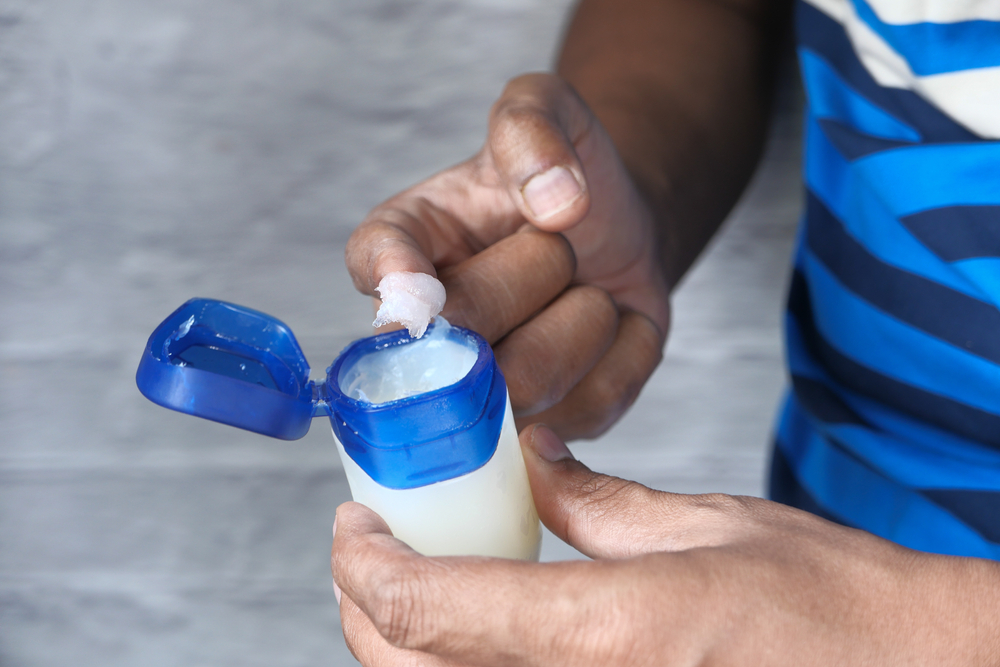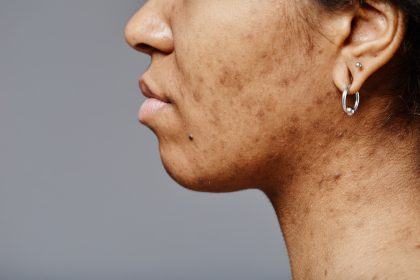Safety considerations and scientific evidence
While petroleum jelly has been used safely for generations, its origins in the oil industry have sparked concerns about potential risks, particularly in unrefined forms. Raw petroleum products may contain polycyclic aromatic hydrocarbons (PAHs), which are known to be carcinogenic. However, when the substance is properly refined, as with white petrolatum, these harmful compounds are removed, minimizing the risk. In addition, petroleum jelly’s molecular structure prevents it from being absorbed into the skin significantly. It primarily functions as a barrier, providing a protective layer over the skin’s surface.
Extensive research into its safety profile has consistently shown that petroleum jelly is non-toxic and presents minimal risk when used as directed. Its occlusive properties create an effective barrier against moisture loss, making it an ideal solution for treating a variety of skin conditions. However, as with any product, certain precautions must be taken to ensure proper use.
Quality standards and selection criteria
Not all petroleum jelly products are created equal. When selecting a product, it is important to consider certain quality indicators. First, look for products that have received the United States Pharmacopeia (USP) certification. This designation ensures the product meets pharmaceutical-grade purity and safety standards. Additionally, white petrolatum, which undergoes enhanced refinement, is generally considered the highest quality form of petroleum jelly. Be sure to choose products from reputable manufacturers, as this ensures the highest level of quality control throughout the production process.
Therapeutic applications and benefits
Modern research continues to validate the therapeutic benefits of petroleum jelly, highlighting its versatility in skincare. The primary mechanism by which petroleum jelly works is its occlusive nature, meaning it forms a barrier on the skin that prevents moisture from escaping. This feature makes it an effective solution for a variety of conditions, such as dry skin and eczema.
Moisture retention: By forming a protective layer over the skin, petroleum jelly helps to prevent transepidermal water loss, keeping skin hydrated in even the most challenging environmental conditions. This property is particularly beneficial for individuals living in dry or cold climates.
Wound healing: Clinical studies have demonstrated that petroleum jelly can aid in the healing of minor cuts and burns. The moisture-retaining properties of the substance help create a moist wound environment, which accelerates healing while protecting against contaminants and infection.
Hair and scalp care: Petroleum jelly is also used in hair care, where it offers protection against mechanical damage and improves hair shine. It is often used to condition dry hair, although users should be cautious to avoid buildup. When applied to the scalp, it can help protect from dryness or flakiness.
Considering potential risks
While petroleum jelly is widely regarded as safe, there are some important considerations to keep in mind. For example, individual sensitivity can result in localized reactions in some users. Additionally, because of its occlusive nature, petroleum jelly can potentially trap bacteria in acne-prone skin, leading to breakouts. Medical professionals advise against the use of petroleum jelly in the nasal passages due to a risk of lipoid pneumonia, a rare condition that can result from inhaling oils.
It’s essential to be mindful of these risks and use petroleum jelly as directed. For individuals with sensitive skin or those prone to breakouts, it’s a good idea to test the product on a small area before widespread use.
Natural alternatives and modern options
As the natural skincare movement gains momentum, there has been increased interest in alternatives to petroleum jelly. Some of the most popular natural options include:
Coconut oil: Known for its antimicrobial properties, coconut oil is an effective alternative to petroleum jelly that also provides moisture to the skin.
Beeswax: Beeswax offers a similar barrier function as petroleum jelly but also contains natural antioxidants and antibacterial compounds.
Shea butter: Rich in vitamins A, E, and F, shea butter is another natural alternative that moisturizes while protecting the skin’s barrier function.
Lanolin: A derivative of sheep’s wool, lanolin closely mimics the oils naturally produced by the skin, though it can cause allergic reactions in some individuals.
These natural alternatives, while beneficial, may not provide the same level of occlusiveness as petroleum jelly. It’s important for consumers to consider their specific skincare needs and sensitivities when choosing a product.
Future perspectives
The future of this product looks promising as it bridges the gap between its industrial origins and its modern-day application as a trusted skincare solution. As consumers seek more transparency in their personal care choices, understanding the science behind this product and the proper way to use it is crucial for informed decision-making.
Conclusion
Petroleum jelly remains a versatile and effective skincare product that has stood the test of time. From its industrial roots to its widespread use in medicine cabinets today, it continues to offer reliable benefits, particularly in moisture retention and wound healing. While there are natural alternatives available, petroleum jelly’s proven safety profile, coupled with its ongoing evolution in the skincare industry, ensures it will remain an important part of modern self-care routines. By understanding the science behind petroleum jelly’s properties and considering individual skin needs, consumers can make informed choices about how to incorporate it into their skincare regimen.















